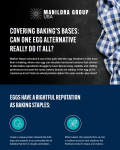Soylent recalls shipments of Soylent 1.8 powder over undeclared allergen

In a statement on its website, the L.A.-based meal-replacement brand explained: “It has recently come to our attention that a small amount of whey powder may have been incorporated into one production lot of Soylent 1.8 powder during manufacturing at our third party facility."
Recall #3
It added: “This voluntary recall is immediately being initiated after it was discovered that the milk-containing product was handled adjacent to the production lines for Soylent 1.8 powder. Subsequent investigation indicated that the potential cross-contact was caused by a temporary breakdown in our 3rd party manufacturer’s production and packaging processes.
“As a precautionary measure we have halted shipments of Soylent 1.8 powder (SKU: 1WK-V108) with Lot #: G7076PA, Expiration / Best Buy date: 02/2018.
“We have started shipping newer lots to customers and do not anticipate an interruption in supply at this time… No illnesses have been reported to date in connection with this issue, and this will not impact future shipments of Powder 1.8.”
Recall #2
Soylent powder v1.8 was launched in late March after Soylent made more changes to its formulation (version 1.7 was rushed out pretty rapidly in late December 2016 following the high-profile recall of v1.6 in the fall of 2016 amid reports of digestive discomfort).
Soylent initially suspected whole algal flour was to blame for the problems with v1.6 – a contention hotly disputed by algae ingredients supplier TerraVia – and quickly reformulated the powder to remove it in v1.7.
Just a month later, however, it tweaked the recipe again (v1.8), this time replacing isomaltooligosaccharide or ‘IMO' with soluble corn fiber – which it claimed “provided a truer source of fiber to the consumer” - and replacing high oleic algal oil with high oleic canola oil.
Recall #1
The marks the third time the young brand has recalled its products.
The first recall came in 2015 after it detected a manufacturing glitch which caused mold to grow on the exterior of some bottles of its flagship rady-to-drink product, Soylent 2.0. A probe at the manufacturing facility of its co-packer revealed that guardrail settings on a conveyor were not optimized, causing some bottles to move erratically, resulting in small splashes on the external surface of the bottle.


















